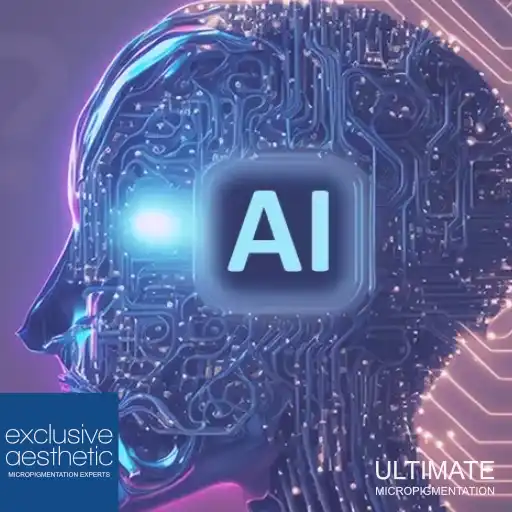Can AI Truly Enhance the Virtual Try-On Experience?
Can AI Truly Enhance the Virtual Try-On Experience?
Outline
Introduction
- Definition of virtual try-on
- Brief overview of AI’s role in virtual try-on technology
Benefits of Virtual Try-On
- Convenience for consumers
- Reduction of returns
- Enhanced customer engagement
Challenges in Virtual Try-On
- Accuracy of virtual representation
- Technical limitations
- Integration with various platforms
Role of AI in Enhancing Virtual Try-On
- Image recognition and analysis
- Personalisation and recommendation algorithms
- Real-time adjustments and feedback
Examples of AI-powered virtual Try-On Solutions
- Fashion and beauty industries
- Eyewear and accessories
- Furniture and home decor
Impact on Retail and E-commerce
- Improving customer satisfaction
- Boosting conversion rates
- Revolutionising the shopping experience
Future Trends and Developments
- Advancements in AI technology
- Integration of augmented reality (AR)
- Expansion to new industries and applications
Ethical Considerations
- Privacy concerns
- Potential for perpetuating unrealistic beauty standards
- Bias in algorithms
Conclusion
FAQs
- How accurate are AI-powered virtual try-on experiences?
- Can virtual try-on replace physical shopping entirely?
- What are the limitations of current virtual try-on technologies?
- How does AI enhance the virtual try-on process?
- What industries besides fashion are adopting virtual try-on technology?

Can AI Truly Enhance the Virtual Try-On Experience?
Introduction
In today’s digital age, trying on clothes or accessories virtually has gained significant traction. Virtual try-on, powered by AI technology, offers consumers a convenient way to visualise products before purchasing. But can AI truly enhance this virtual try-on experience?
Benefits of Virtual Try-On
Virtual try-on offers several benefits to both consumers and retailers. For consumers, it provides convenience by eliminating the need to try on items physically. This saves time and effort, especially for online shoppers. Additionally, virtual try-on reduces the likelihood of returns, as customers can better assess how products look and fit before buying. Moreover, it enhances customer engagement by offering an interactive and immersive shopping experience.
Challenges in Virtual Try-On
Despite its advantages, virtual try-on technology faces several challenges. One of the primary concerns is the accuracy of virtual representations. Ensuring that the virtual try-on reflects the true appearance and fit of products remains a significant hurdle. Technical limitations could be improved, such as rendering quality and device compatibility. Moreover, integrating virtual try-on technology seamlessly across various platforms requires careful planning and execution.
Role of AI in Enhancing Virtual Try-On
AI plays a crucial role in enhancing the virtual try-on experience. By leveraging image recognition and analysis algorithms, AI can accurately map clothing or accessories onto a user’s image or video. Personalisation and recommendation algorithms enhance the experience by suggesting products tailored to individual preferences. Real-time adjustments and feedback mechanisms allow users to customise their virtual try-on experience according to their needs and preferences.
Examples of AI-powered virtual Try-On Solutions
AI-powered virtual try-on solutions have gained popularity across various industries. Virtual try-ons allow customers to preview clothing, makeup, and hairstyles before purchasing in the fashion and beauty sectors. Similarly, in the eyewear and accessories industry, customers can try on glasses, jewellery, and watches virtually. Even in furniture and home decor, virtual try-ons enable customers to visualise how products will look in their homes before buying.
Impact on Retail and E-commerce
The adoption of virtual try-on technology has significant implications for retail and e-commerce. Virtual try-ons can help retailers boost conversion rates and increase sales by improving customer satisfaction and reducing returns. Moreover, it revolutionises the shopping experience by making it more interactive and immersive. As a result, retailers who embrace virtual try-on stand to gain a competitive edge in the market.
Future Trends and Developments
Looking ahead, the future of virtual try-on is promising. Advancements in AI technology will continue to enhance the accuracy and realism of virtual representations. Integration of augmented reality (AR) capabilities will further blur the line between virtual and physical shopping experiences. Additionally, virtual try-on is expected to expand to new industries and applications beyond fashion and beauty.
Ethical Considerations
Despite its benefits, virtual try-on technology raises ethical concerns. Privacy issues may arise as companies collect and analyse user data to improve their algorithms. Moreover, virtual try-on experiences have the potential to perpetuate unrealistic beauty standards and body images. Ensuring transparency and fairness in AI algorithms is crucial to addressing these ethical concerns.
Conclusion – Can AI Truly Enhance the Virtual Try-On Experience?
Can AI Truly Enhance the Virtual Try-On Experience? In conclusion, AI has the potential to enhance the virtual try-on experience. By overcoming challenges and leveraging advanced algorithms, AI-powered virtual try-on solutions offer a convenient, immersive, and personalised shopping experience. As technology evolves, virtual try-ons will play an increasingly significant role in reshaping the retail landscape.
FAQs
Can AI Truly Enhance the Virtual Try-On Experience?
How accurate are AI-powered virtual try-on experiences?
AI-powered virtual try-on experiences strive for accuracy, but fit and appearance may still be limitations.
Can virtual try-on replace physical shopping entirely?
While virtual try-on offers convenience, physical shopping provides a tactile experience that some consumers may prefer.
What are the limitations of current virtual try-on technologies?
Technical challenges such as rendering quality and device compatibility are among the limitations of current virtual try-on technologies.
How does AI enhance the virtual try-on process?
AI enhances the virtual try-on process through image recognition, personalisation algorithms, and real-time adjustments.
What industries besides fashion are adopting virtual try-on technology?
Industries such as beauty, eyewear, accessories, and home decor also adopt virtual try-on technology to enhance the shopping experience.
Micropigmentation training by the industry expert with 35+ years’ experience.
Can AI Truly Enhance the Virtual Try-On Experience?
Links To Our UK Services
- Homepage
- SPMU Training
- Foundation SPMU Training
- Tattoo Removals Training
- Eyebrow Tattoo Training
- Lip Blush Training
- Medical Micropigmentation Training
- Scalp Micropigmentation Training
- Areola Tattoo Training
- Scar Removal Training
- Skin Rejuvenation Training
- All Training Courses
Can AI Truly Enhance the Virtual Try-On Experience?
GET IN TOUCH
If you would like to enquire about one of our training courses or treatments, message us using the floating widget (bottom right of the page), and we will contact you to discuss the next step.
Prefer to discuss using WhatsApp? Please get in touch with Candice using the number below.
Can AI Truly Enhance the Virtual Try-On Experience?
We support the NHS.

